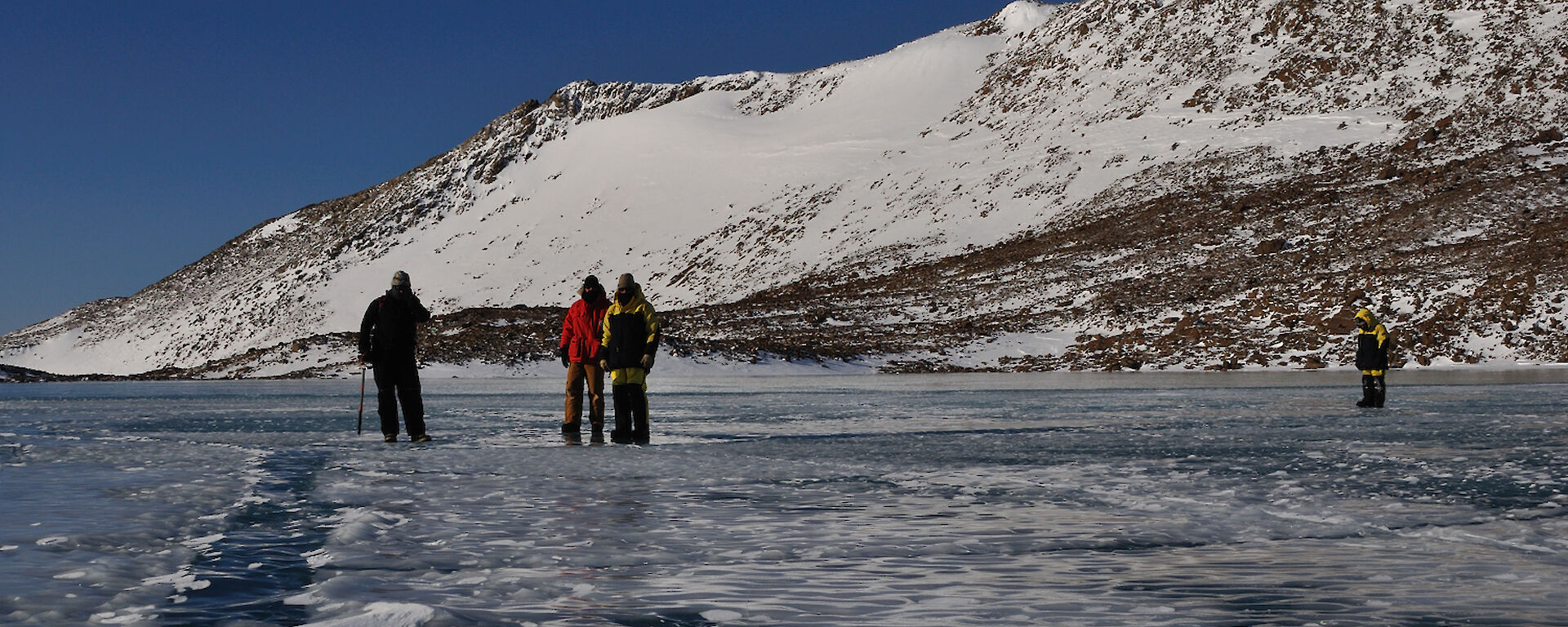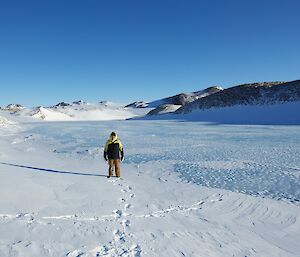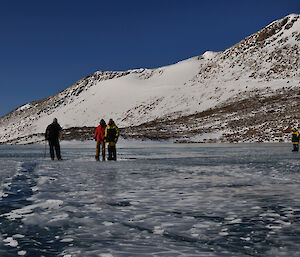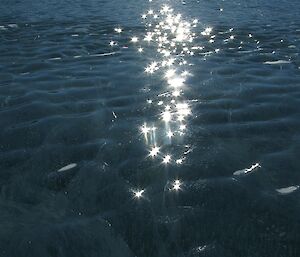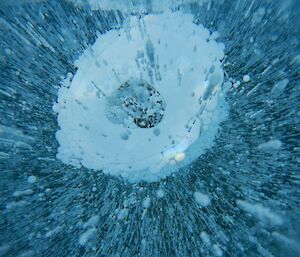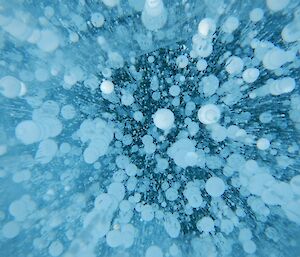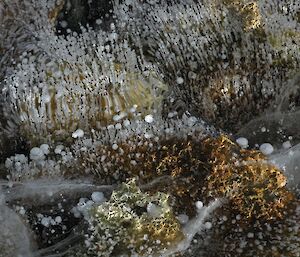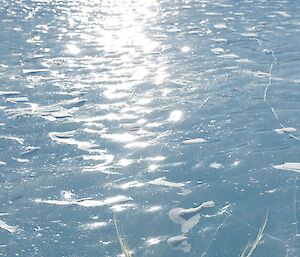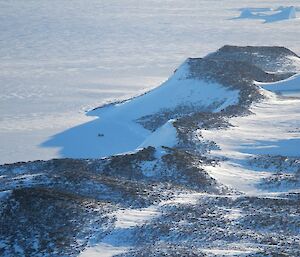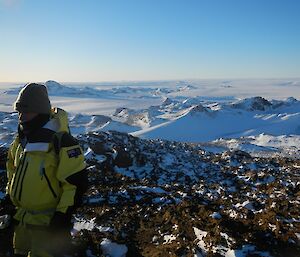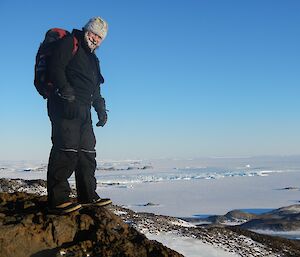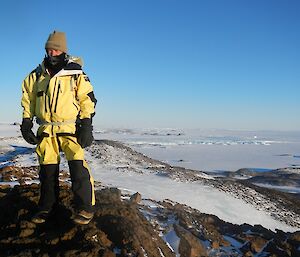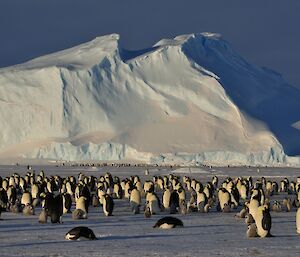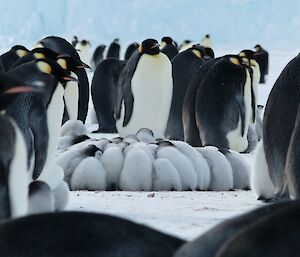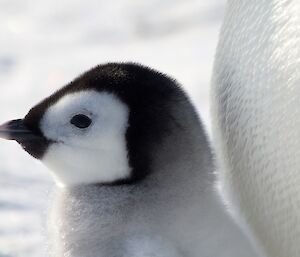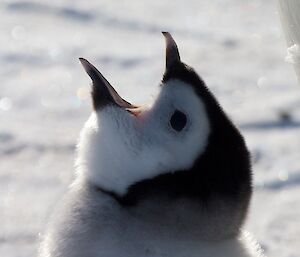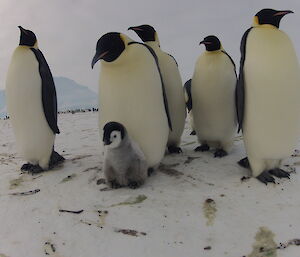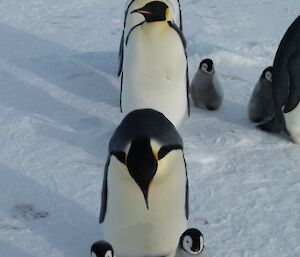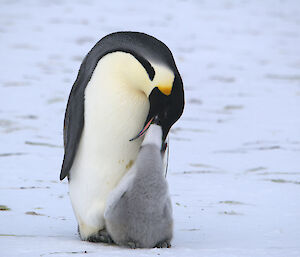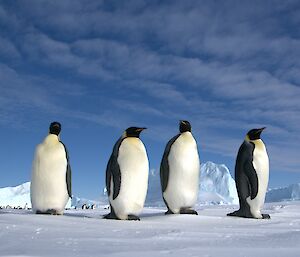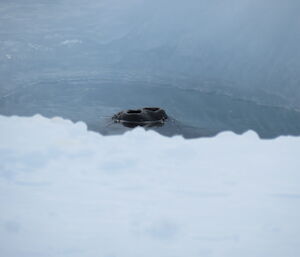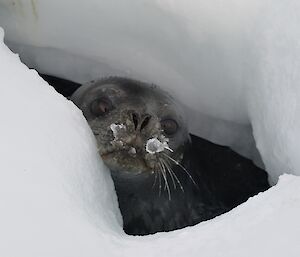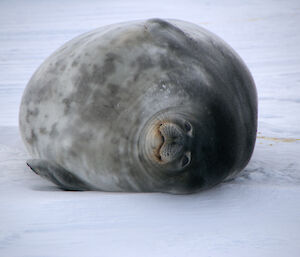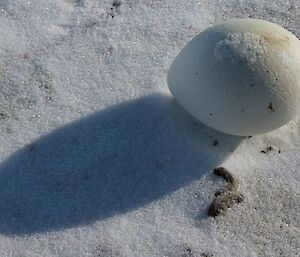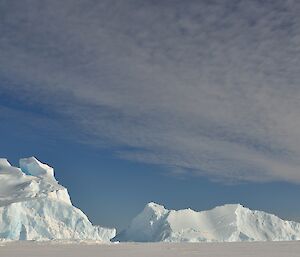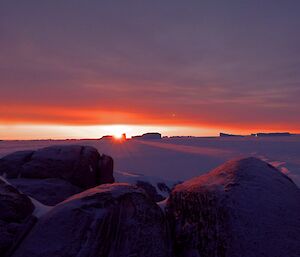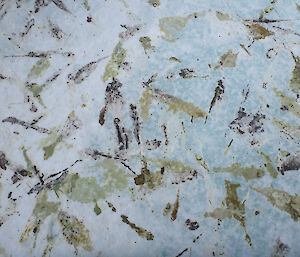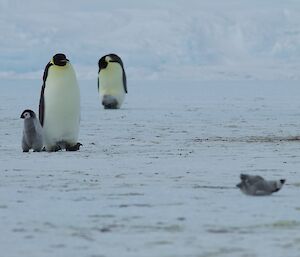Chapman Ridge is located roughly 90km West of Mawson in Mac Robertson Land and extends southwest of Byrd Head.
A little history: Mac Robertson Land is named after Macpherson Robertson who was a confectioner and made a donation to BANZARE for the 1929–1931 expedition. Byrd Head is named after Richard E. Byrd, polar explorer and aviator and Chapman Ridge after P. Chapman, an auroral physicist at Mawson in 1958. The area was discovered during the BANZARE expedition of 1929–1931.
The Chapman Ridge itself is a rocky ridge which has the dusting of snow and rises up before meeting the plateau to the south with multiple peaks. Bob, Ian and I decided that whilst in the Colbeck region, that we would take a walk one morning along the ridge to the tallest peak.
We left the hut at 7AM, leaving the other four from our party to sleep in. After a quick Hagg drive from the hut to Byrd Head, we located a reasonable place to ascend the ridge. Whilst ascending the ridge, we were lucky enough to have a clear morning and admire the views including Mt Henderson which is roughly 90-100kms away yet still clear as there is no pollution suspended in the air. The highest peak on the ridge was reached after roughly 1.5 hours, and we spent some time admiring the view of the Colbeck Archipeligo and the icebergs trapped in the ice around the islands and the plateau to the south. We also took the time to check in to Mawson and pose for a few photos. Visible also from the Ridge and the as yet unnamed peak, is Lake Reynolds to the east of the ridge.
Lake Reynolds is one of two large frozen freshwater lakes near Chapman Ridge, with the second lake, Lake Barkell to the west. They are both fascinating, with a smooth surface and different patterns of air bubbles trapped below the surface in all sorts of arrangements and sizes. Where the surface is clear enough and when the bubbles allow, the rocky bottom of the lake can be seen in places. As well as the lakes, there are descriptions of whale bones and mummified seals in the Hut Log book, none of which we could locate during the two days in the area. However, we did locate an old cache, which consisted of a number of tins. These presumably contained Pemmican for explorers as well as dog teams and a larger can that may have contained fuel.
After admiring the view (and taking the obligatory vehicle photo from the peak for Ian, our trip mechanic), we returned down the ridge to the vehicle then traveled back to the most famous bacon and cheese toasties in this part of Mac Robertson Land prepared by the four who remained in the hut.
Anders

